

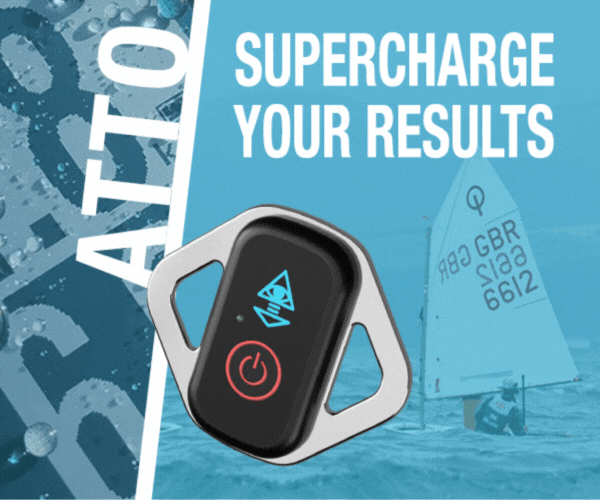


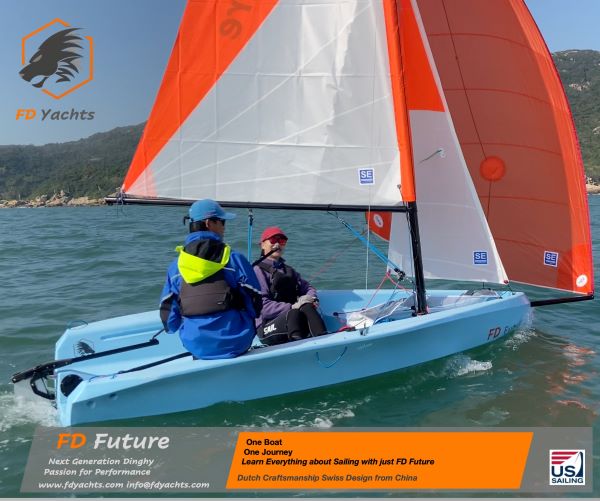
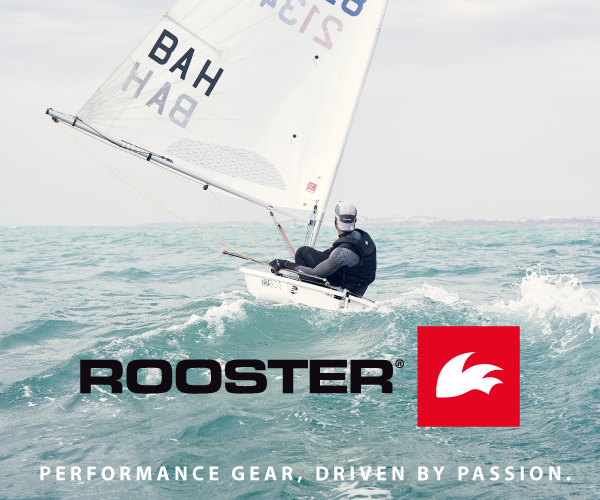
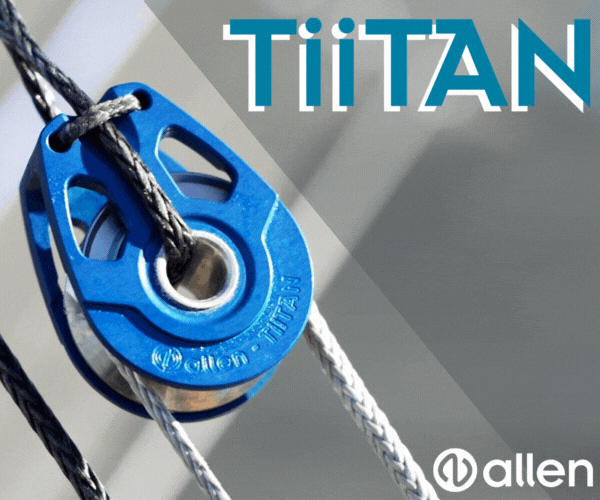
-(1)-202408140552.gif)




Boats for sale
| Laser 28 - Excellent example of this great design Hamble le rice |
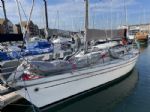 |
| Rossiter Pintail Mortagne sur Gironde, near Bordeaux |
 |
List classes of boat for sale |
Sail Panel Layout |
Post Reply 
|
Page 123 5> |
| Author | |
Guests 
Guest Group 
|
 Post Options Post Options
 Quote Quote  Reply Reply
 Topic: Sail Panel Layout Topic: Sail Panel LayoutPosted: 08 May 19 at 9:10am |
|
Why do some boats have radial sails that radiate only from the clew all the way to the luff (e.g. Laser Radial, 9ers) whilst other radial sails have a panel running up the luff e.g. RS800, RS400? I imagine sails with a luff panel might cost slightly more and stretch less under downhaul load, but I can't imagine the 49er has compromised performance just to save a few pennies. Similarly, in the Solo class the North radial sail has a luff panel but the HD radial sail does not, and they are competing on performance not price. So, what's the thinking behind it?
|
|
 |
|
Guests 
Guest Group 
|
 Post Options Post Options
 Quote Quote  Reply Reply
 Posted: 08 May 19 at 10:25am Posted: 08 May 19 at 10:25am |
|
Depends how tolerant the cloth is of cross loading. Also depends on how much Cunningham ever gets pulled on versus kicker.
I've always been surprised that the 9er don't run a full length luff panel. But then they use the same material throughout. The 800/400 has clearer panels lower down which you wouldn't want to be cross loading with downhaul. But then the 200 is all the same material and still has the full length luff panel... If you look at the 29er (or 49er) they have the double cuff at the bottom which spreads downhaul loads, then the radial cuts below the second batten have extra reinforcing near the luff. Also the 49er generally have a lot more taping around the battens and the luff in general.  |
|
 |
|
Guests 
Guest Group 
|
 Post Options Post Options
 Quote Quote  Reply Reply
 Posted: 08 May 19 at 11:26am Posted: 08 May 19 at 11:26am |
|
Thanks Mozzy. It hadnít occurred to me the reinforcement on the 29er was for that.
|
|
 |
|
Sam.Spoons 
Really should get out more 
Joined: 07 Mar 12 Location: Manchester UK Online Status: Offline Posts: 3400 |
 Post Options Post Options
 Quote Quote  Reply Reply
 Posted: 08 May 19 at 12:07pm Posted: 08 May 19 at 12:07pm |
|
I'm not sure why radial cut sails are so popular with laminate sailcloths but with dacron the cloth is much more stretchy on the bias so aligning it to get just the right amount of stretch makes sense.
Perfectly good sails can be made using broad seam construction too but we'd need a sailmaker to chip in to explain the detail.
|
|
|
Spice 346 "Flat Broke"
Blaze 671 "supersonic soap dish" |
|
 |
|
Guests 
Guest Group 
|
 Post Options Post Options
 Quote Quote  Reply Reply
 Posted: 08 May 19 at 12:41pm Posted: 08 May 19 at 12:41pm |
|
Laminate sails are made with directional bias due to fibre lay up, so even more so than Dacron they will benefit from proper orientation with sail loads which radial cut allows. Like Sam says,Dacron does hold tension better across it's fill, hence cross cut sails, but most of the benefit for radial in Dacron is in the seams. Here in the 9er material you can see black which lines up with predominate load direction and a blue cross weave for stability.  The obvious exclusion is those bespoke 3DL type sails, where you can make whole sails with correct fibre orientation and shape with no seams. |
|
 |
|
Sam.Spoons 
Really should get out more 
Joined: 07 Mar 12 Location: Manchester UK Online Status: Offline Posts: 3400 |
 Post Options Post Options
 Quote Quote  Reply Reply
 Posted: 08 May 19 at 1:12pm Posted: 08 May 19 at 1:12pm |
|
Yeah, thanks, as a Demon Design user in my Raceboard days I was aware of that but decided it would complicate the issue in my reply. Laminates are much more stable than woven sailcloth when stressed on the bias or across the line of reinforcement so I would have thought the gains would be much less significant. Demon race sails had a deliberately stretchy luff panel to allow extreme shape changes from huge camber to almost completely flat with a twisted off 'floppy' head. This allowed a single sail to work in 3-30 knots.
Edited by Sam.Spoons - 08 May 19 at 1:32pm |
|
|
Spice 346 "Flat Broke"
Blaze 671 "supersonic soap dish" |
|
 |
|
iGRF 
Really should get out more 
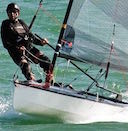
Joined: 07 Mar 11 Location: Hythe Online Status: Offline Posts: 6499 |
 Post Options Post Options
 Quote Quote  Reply Reply
 Posted: 08 May 19 at 1:51pm Posted: 08 May 19 at 1:51pm |
|
The Original reason for radial panels was to follow catenary load lines (look it up I'm not going to explain it) the inclusion of a vertical panel follows the foot to head load line and is preferred if there is going to be big downhaul tensions which there are obviously in windsurfing sails within which this was a popular feature once upon a time.
Now depending on where the sailmakers put their shaping, in the luff like windsurfing or panels as was the case i dinghies I presume still is, then there will be an element of both. I.e. the vert panel will be shaped at the luff and the radial panels will have some seam shaping, but not too great or it'll defeat the previous objective of locking the shape in place via the catenary stress lines. |
|
 |
|
Guests 
Guest Group 
|
 Post Options Post Options
 Quote Quote  Reply Reply
 Posted: 08 May 19 at 1:57pm Posted: 08 May 19 at 1:57pm |
|
Sam, I'm not so sure. Laminate tend to be made lighter than their dacron equivalents rather than stronger.
I agree that Dacron when pulled diagonally will stretch more then laminate. But after some wear I've seen quite a few laminate sails just pull apart parallel to the main fibre direction. I think if you got the wrong loading you'd see some very short laminate sail lives. Which leads me to believe that getting the cloth orientated correctly for laminate is more important. Obviously there are a whole heap of fibre layups under the term laminte. If you take the old 200 sail that had lots of cross runs and was very thick. It behaved more like dacron and hence was fine with the cross cut. But most the new laminates (9ers and RS) have a much less dense weave.
Edited by mozzy - 08 May 19 at 2:00pm |
|
 |
|
Sam.Spoons 
Really should get out more 
Joined: 07 Mar 12 Location: Manchester UK Online Status: Offline Posts: 3400 |
 Post Options Post Options
 Quote Quote  Reply Reply
 Posted: 08 May 19 at 2:34pm Posted: 08 May 19 at 2:34pm |
|
Yes, got you. My understanding is that the difference with dacron is that it stretches a lot more diagonally than in line with the threads, and more in line with the weft than the warp, inevitable 'cos of how it's made. the filler/coating reduces this (and that is one reason why old sails perform badly). Laminate sailcloth is inherently less stretchy than dacron and can be made with very little stretch in chosen directions (some stretch is necessary or the sail would only set correctly at one precise setting and be, effectively, non-adjustable).
|
|
|
Spice 346 "Flat Broke"
Blaze 671 "supersonic soap dish" |
|
 |
|
Guests 
Guest Group 
|
 Post Options Post Options
 Quote Quote  Reply Reply
 Posted: 08 May 19 at 2:42pm Posted: 08 May 19 at 2:42pm |
|
So the 49er doesn't have a luff panel because the cuff and seam tape reinforcement is enough to take the (presumably very high) downhaul loads?
Can the cuff really be credited with being able to do away with the luff panel, otherwise why do so many lower performance, less loaded, sails have a luff panel? Edit: Just noticed the 49er FX does have a luff panel... Edited by A2Z - 08 May 19 at 2:45pm |
|
 |
|
Post Reply 
|
Page 123 5> |
| Forum Jump | Forum Permissions  You cannot post new topics in this forum You cannot reply to topics in this forum You cannot delete your posts in this forum You cannot edit your posts in this forum You cannot create polls in this forum You cannot vote in polls in this forum |
Bulletin Board Software by Web Wiz Forums® version 9.665y
Copyright ©2001-2010 Web Wiz
Change your personal settings, or read our privacy policy
Copyright ©2001-2010 Web Wiz
Change your personal settings, or read our privacy policy











 Printable Version
Printable Version Delicious
Delicious Digg
Digg Facebook
Facebook Furl
Furl Google
Google MySpace
MySpace Newsvine
Newsvine reddit
reddit StumbleUpon
StumbleUpon Twitter
Twitter Windows Live
Windows Live Yahoo Bookmarks
Yahoo Bookmarks Topic Options
Topic Options